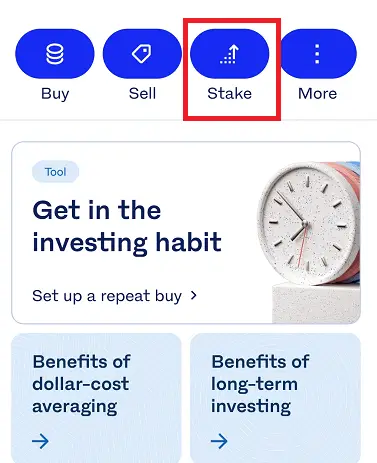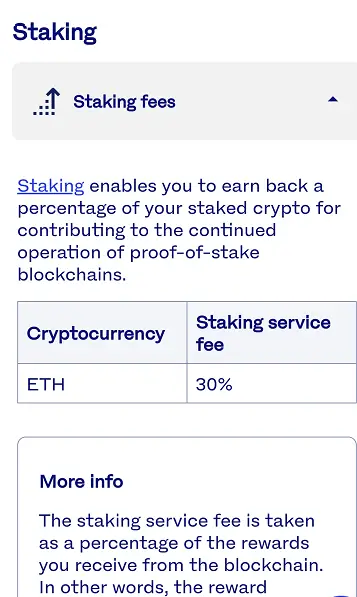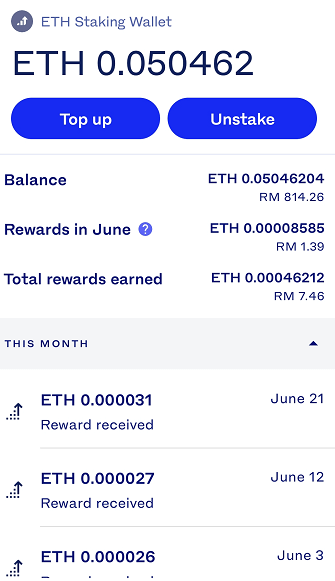In this post, I will be sharing my experience with crypto staking in Malaysia.
Among others, I will share about things worth knowing before staking your cryptos such as the risks, rewards, tips, how to start crypto staking in Malaysia, and my Ethereum staking portfolio.
[Disclaimer: The author is not a certified financial planner. This blog post is for informational purposes only and does not constitute financial or investment advice. Crypto staking involves risks. Before making any staking decisions, you should carefuly consider your financial situation and consult a qualified financial advisor if neccessary. Under no circumstance shall the author be liable for any loss or damages from your use of information presented in this blog post.]
What is crypto stacking?
Crypto staking is a way for crypto holder to participate in and support the operations of a blockchain network, and in return, they receive crypto rewards.
When performing crypto staking, crypto holders agree to hold a certain amount of a cryptocurrency in a digital wallet to support the operations of a blockchain network.
Cryptocurrencies often use a consensus mechanism called Proof of Stake (PoS) or a variant. In PoS, instead of miners competing to solve complex mathematical problems (as in Proof of Work), participants (validators) are chosen to create new blocks and validate transactions based on the amount of cryptocurrency they hold and are willing to “stake” as collateral.
Some example of cryptos projects that use PoS consensus mechanism are Ethereum and Cardano.
How crypto staking works?
Below are simple explanation on how crypto staking works:
- You acquire a certain amount of a specific cryptocurrency that supports staking, such as Ethereum.
- You lock or “stake” your coins in a special wallet on the blockchain. This shows your commitment to supporting the network.
- The blockchain protocol then selects validators to create new blocks and validate transactions based on factors like the amount of cryptocurrency they have staked.
- As a reward for staking your coins and helping secure the network, you earn additional coins. These rewards are usually a percentage of the coins you have staked.
The more coins you stake, the higher your chances of being selected as a validator and earning rewards.
Crypto stacking benefits
Crypto staking offers several benefits for individuals who choose to participate.
Here are some of the key advantages:
1. Earning passive income
One of the primary benefits of crypto staking is the opportunity to earn passive income. By staking your cryptocurrency, you receive additional coins as rewards.
This can be a way to generate income without actively trading or participating in other complex financial activities.
2. Low entry requirement
Staking often has a lower entry barrier compared to other forms of participation in blockchain networks.
Users can stake smaller amounts of cryptocurrency and still earn rewards, making it accessible to a broader audience.
3. Diversification
Staking provides an additional way for investors to diversify their crypto portfolios.
Instead of relying solely on price appreciation, individuals can earn rewards through staking, adding another layer of potential return.
4. Transparent and predictable rewards
Staking rewards are often transparent and predictable, with known rates and mechanisms.
This predictability can be appealing to investors looking for a steady income stream.
5. Network security
Staking contributes to the security and decentralization of blockchain networks. Participants who stake their coins become validators, helping to validate transactions and secure the network.
This makes it more resistant to attacks and ensures a reliable and robust blockchain.
6. Incentivizing long-term holding
Staking encourages long-term holding of cryptocurrencies. When individuals stake their coins, they commit to keeping them locked up for a certain period.
This reduces the circulating supply of the cryptocurrency and can potentially contribute to price stability or appreciation over time.
7. Participation in governance
Some blockchain networks allow stakers to participate in governance decisions. Stakers may have voting rights on proposed protocol upgrades, changes, or other decisions that impact the network.
This gives stakeholders a say in the evolution of the blockchain.
8. Community engagement
Staking encourages community involvement and engagement. Participants become active stakeholders in the network, fostering a sense of ownership and commitment to its success.
This can lead to a more decentralized and robust blockchain ecosystem.
Crypto stacking risks
Crypto staking, while offering various benefits, also comes with its own set of risks. It’s essential for participants to be aware of these risks and take necessary precautions.
Here are some common risks associated with crypto staking:
1. Market Volatility
Cryptocurrency prices are known for their volatility. The value of the staked assets can fluctuate, affecting the overall value of the staker’s portfolio.
Market downturns can lead to potential losses if the staked cryptocurrency depreciates in value.
2. Slashing
Slashing is a penalty mechanism employed in some staking networks to discourage malicious behavior by validators.
If a validator is found to be acting against the rules or the best interest of the network, they may lose a portion of their staked funds.
Validators need to be cautious to avoid activities that could lead to slashing.
3. Lock-up periods
Staking often involves a lock-up period during which staked assets cannot be freely moved or traded.
If a participant needs quick access to their funds, the lock-up period may pose liquidity challenges.
4. Unstaking delays
Certain blockchain networks impose unstaking periods during which participants cannot access their staked funds.
This lack of liquidity can be a concern if participants need to sell or transfer their tokens quickly.
5. Network risks
Blockchain networks may face technical issues, bugs, or vulnerabilities.
Stakers are exposed to the risk of network failures, which could result in financial losses or the temporary inability to access staked funds.
6. Protocol changes
Blockchain protocols can undergo upgrades or changes that may impact the staking process.
Participants should stay informed about potential protocol changes that could affect their staked assets or rewards.
7. Regulatory Risks
The regulatory environment for cryptocurrencies and staking can vary widely.
Changes in regulations or government policies may impact the legality and viability of staking activities in certain jurisdictions.
8. Technology risks
Participants may face risks related to the technology infrastructure, including issues with staking platforms, wallets, or communication failures.
Technical glitches could result in the loss of staked assets or rewards.
9. Project Risks
The success of a staking venture is tied to the overall success and adoption of the underlying blockchain project.
If the project faces challenges, regulatory issues, or fails to gain traction, it may impact the value of the staked tokens.
10. Dependency on staking platforms
Participants often rely on third-party staking platforms to facilitate the staking process.
If these platforms experience technical issues, security breaches, or go offline, it can impact the staker’s ability to earn rewards or access their staked funds.
Tips to maximize crypto stacking
Maximizing crypto staking involves strategic decision-making and careful management of your staking activities.
Here are some tips to help you make the most of your crypto staking experience:
1. Research and choose wisely
Select cryptocurrencies with strong fundamentals and projects that you believe in for long-term success.
Choose staking platforms with a solid reputation, secure technology, and transparent operations such as Luno Malaysia.
2. Diversify your portfolio
Diversification helps spread risk. Consider staking multiple cryptocurrencies to reduce the impact of poor performance in a single asset.
3. Understand the staking mechanism
Each blockchain may have a different staking mechanism. Understand the rules, lock-up periods, and any potential penalties (such as slashing) associated with staking.
4. Consider staking pools
Staking pools allow participants to combine their resources, increasing the chances of being selected as a validator and receiving rewards more consistently.
5. Stay informed about network upgrades
Keep track of any planned network upgrades, forks, or changes in the underlying technology that may impact your staking activities.
6. Monitor validator performance
If you have the option to choose specific validators, monitor their performance, reliability, and reputation within the network. Some platforms provide tools to help assess validator performance.
7. Be mindful of market trends
Stay informed about market trends and potential impacts on the value of the staked cryptocurrency. This awareness can help you make informed decisions about when to stake or unstake.
8. Stay liquid when necessary
Consider the lock-up periods associated with staking and evaluate whether you need liquidity for other investment opportunities or unexpected expenses.
9. Regularly reevaluate your strategy
Crypto markets and technologies evolve. Regularly reassess your staking strategy based on market conditions, technological developments, and changes in your financial goals.
10. Participate in governance (if available)
If the blockchain network allows for governance participation, actively engage in the decision-making process. This involvement can give you a say in the direction of the project.
11. Mitigate risks
Implement security measures for your staking activities, such as using hardware wallets, choosing reputable staking platforms, and keeping your private keys secure.
12. Tax planning
Understand the tax implications of staking rewards in your jurisdiction. Properly document your staking activities for tax reporting purposes.
13. Manage expectations
While staking provides passive income, be realistic about potential rewards. Crypto markets are volatile, and returns may vary over time.
Remember that crypto staking involves risks, and there are no guaranteed profits. It’s crucial to stay informed, stay secure, and continuously adapt your strategy based on changing market conditions and the evolving landscape of blockchain technology.
How to do crypto stacking in Malaysia?
Recently, Luno Malaysia (the first digital asset exchange approved by Securities Commission Malaysia(SC)) started offering crypto stacking service for Ethereum (ETH) and Cardano (ADA).
As I am a Luno users, and I own some Ethereum, I decided to try out the crypto staking myself after I read through Luno’s Staking terms and conditions.
Here is the step by step on how to perform crypto staking through Luno Malaysia.

- First, buy some Ethereum through Luno Malaysia.
- If you are new to Luno and have not purchased Ethereum, register through my Luno promo code <PAWHVW> to receive RM75 in free Bitcoin when you buy RM250 or more worth of Ethereum which you can then stake and earn rewards on Luno.
- Once you bought some Ethereum, go to Luno wallet, select STAKE as shown on screenshot above.
- Next, follow the procedure to create an Ethereum Staking wallet.
- Enter the amount of Ethereum you’d like to stake then select NEXT.
- Confirm the amount of Ethereum to be staked and click STAKE NOW.
- Lastly, sit back and earn Ethereum rewards every week.
Why stake Ethereum on Luno?
Other than enjoying all crypto staking benefits mentioned above, below are the reasons why I tried up Luno Ethereum staking service:
- Luno is approved by SC
I have always emphasize on the importance of using financial services approved by local authority. - Accessible
There are *no limits to start staking. Whether you’ve got 0.00001 ETH or 10 ETH, you can put it to work through Luno. - Simple and quick
You can start staking in just a few taps. Simply create your staking wallet in the Luno app and decide how much ETH you want to put to work. - Secure
Luno claimed that they have rigorously vetted all the validators they work with. - Weekly rewards
Every week, your rewards will be paid automatically into your staking wallet, helping you grow and compound your earnings. Luno will offer an annual reward percentage of up to **4% per annum on staked Ethereum, in Ethereum.
*Minimum deposit of 0.00001 ETH or RM1
**Varies depending on network conditions.
Luno Ethereum staking fees

Luno does not charge a fee when you stake or unstake your crypto. However, there’s a staking service fee of 30% which will be deducted from the reward that customers receive.
In other words, the reward received in Staking Wallet already had this fee deducted from it.
Luno Ethereum stacking portfolio
I started my Ethereum staking with 0.05 ETH in early February 2024.
And below is a screenshot of my current Luno Ethereum staking portfolio.

As shown above, I started receiving my ETH rewards on weekly basis. Up to June 2024, my ETH staking wallet grows from 0.05 ETH to 0.050462 ETH.
I shall update my staking portfolio on quarterly basis.
Final thoughts
Crypto staking is a popular way for crypto owners to earn crypto rewards while contributing to securing and verifying the crypto transactions.
If you wish to try out crypto staking services in Malaysia, you may consider Luno Malaysia. Don’t forget to claim the free RM75 in Bitcoin through my Luno referral code <PAWHVW>.
Lastly, since cryptos are highly volatile, before you decided to try out crypto staking services, make sure you are aware with all the risks involved in crypto staking. Do your own research and read the terms and conditions to better manage your expectation.
If necessary, you may consult with a licensed financial planner for detailed financial advice.
Image Credits
Featured image by WorldSpectrum from Pixabay
All screenshots were taken by the author
